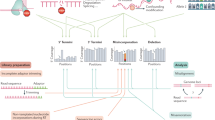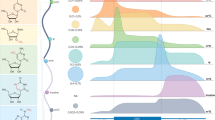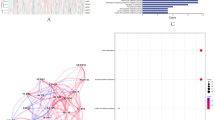Abstract
Over 150 types of RNA modifications are identified in RNA molecules. Transcriptome profiling is one of the key steps in decoding the epitranscriptomic panorama of these chemical modifications and their potential functions. N7-methylguanosine (m7G) is one of the most abundant modifications present in tRNA, rRNA and mRNA 5′cap, and has critical roles in regulating RNA processing, metabolism and function. Besides its presence at the cap position in mRNAs, m7G is also identified in internal mRNA regions. However, its transcriptome-wide distribution and dynamic regulation within internal mRNA regions remain unknown. Here, we have established m7G individual-nucleotide-resolution cross-linking and immunoprecipitation with sequencing (m7G miCLIP-seq) to specifically detect internal mRNA m7G modification. Using this approach, we revealed that m7G is enriched at the 5′UTR region and AG-rich contexts, a feature that is well-conserved across different human/mouse cell lines and mouse tissues. Strikingly, the internal m7G modification is dynamically regulated under both H2O2 and heat shock treatments, with remarkable accumulations in the CDS and 3′UTR regions, and functions in promoting mRNA translation efficiency. Consistently, a PCNA 3′UTR minigene reporter harboring the native m7G modification site displays both enriched m7G modification and increased mRNA translation upon H2O2 treatment compared to the m7G site-mutated minigene reporter (G to A). Taken together, our findings unravel the dynamic profiles of internal mRNA m7G methylome and highlight m7G as a novel epitranscriptomic marker with regulatory roles in translation.
Similar content being viewed by others
Log in or create a free account to read this content
Gain free access to this article, as well as selected content from this journal and more on nature.com
or
References
Yi, C. & Pan, T. Cellular dynamics of RNA modification. Acc. Chem. Res. 44, 1380–1388 (2011).
Boccaletto, P. et al. MODOMICS: a database of RNA modification pathways. 2017 update. Nucleic Acids Res. 46, D303–D307 (2018).
Dominissini, D. et al. Topology of the human and mouse m6A RNA methylomes revealed by m6A-seq. Nature 485, 201–206 (2012).
Meyer, K. D. et al. Comprehensive analysis of mRNA methylation reveals enrichment in 3′ UTRs and near stop codons. Cell 149, 1635–1646 (2012).
Liu, J. et al. A METTL3-METTL14 complex mediates mammalian nuclear RNA N 6-adenosine methylation. Nat. Chem. Biol. 10, 93–95 (2014).
Ping, X. L. et al. Mammalian WTAP is a regulatory subunit of the RNA N 6-methyladenosine methyltransferase. Cell Res. 24, 177–189 (2014).
Wang, Y. et al. N 6-methyladenosine modification destabilizes developmental regulators in embryonic stem cells. Nat. Cell Biol. 16, 191–198 (2014).
Wang, X. et al. N 6-methyladenosine-dependent regulation of messenger RNA stability. Nature 505, 117–120 (2014).
Wang, X. et al. N 6-methyladenosine modulates messenger RNA translation efficiency. Cell 161, 1388–1399 (2015).
Shi, H. et al. YTHDF3 facilitates translation and decay of N 6-methyladenosine-modified RNA. Cell Res. 27, 315–328 (2017).
Hsu, P. J. et al. Ythdc2 is an N 6-methyladenosine binding protein that regulates mammalian spermatogenesis. Cell Res. 27, 1115–1127 (2017).
Xu, C. et al. Structural basis for selective binding of m6A RNA by the YTHDC1 YTH domain. Nat. Chem. Biol. 10, 927–929 (2014).
Liu, N. et al. N 6-methyladenosine-dependent RNA structural switches regulate RNA-protein interactions. Nature 518, 560–564 (2015).
Alarcón, C. R. et al. HNRNPA2B1 is a mediator of m6A-dependent nuclear RNA processing events. Cell 162, 1299–1308 (2015).
Huang, H. et al. Recognition of RNA N 6-methyladenosine by IGF2BP proteins enhances mRNA stability and translation. Nat. Cell Biol. 20, 285–295 (2018).
Patil, D. P., Pickering, B. F. & Jaffrey, S. R. Reading m6A in the transcriptome: m6A-binding proteins. Trends Cell Biol. 28, 113–127 (2018).
Yang, X. et al. 5-methylcytosine promotes mRNA export—NSUN2 as the methyltransferase and ALYREF as an m5C reader. Cell Res. 27, 606–625 (2017).
Dominissini, D. et al. The dynamic N 1-methyladenosine methylome in eukaryotic messenger RNA. Nature 530, 441–446 (2016).
Li, Q. et al. NSUN2-mediated m5C methylation and METTL3/METTL14-mediated m6A methylation cooperatively enhance p21 translation. J. Cell. Biochem. 118, 2587–2598 (2017).
Chen, X. et al. 5-methylcytosine promotes pathogenesis of bladder cancer through stabilizing mRNAs. Nat. Cell Biol. 21, 978–990 (2019).
Yang, Y. et al. RNA 5-methylcytosine facilitates the maternal-to-zygotic transition by preventing maternal mRNA decay. Mol. Cell. S1097-2765, 30490–30493 (2019).
Squires, J. E. & Preiss, T. Function and detection of 5-methylcytosine in eukaryotic RNA. Epigenomics 2, 709–715 (2010).
Schwartz, S. m1A within cytoplasmic mRNAs at single nucleotide resolution: a reconciled transcriptome-wide map. RNA 24, 1427–1436 (2018).
Dai, X., Wang, T., Gonzalez, G. & Wang, Y. Identification of YTH domain-containing proteins as the readers for N 1-methyladenosine in RNA. Anal. Chem. 90, 6380–6384 (2018).
Gauss, D. H., Gruter, F. & Sprinzl, M. Compilation of tRNA sequences. Nucleic Acids Res. 6, r1–r19 (1979).
Motorin, Y. & Helm, M. RNA nucleotide methylation. Wiley Interdiscip. Rev. RNA 2, 611–631 (2011).
Shatkin, A. J. Capping of eucaryotic mRNAs. Cell 9, 645–653 (1976).
Lin, S. et al. Mettl1/Wdr4-Mediated m7G tRNA methylome is required for normal mRNA translation and embryonic stem cell self-renewal and differentiation. Mol. Cell 71, 244–255 (2018).
Alexandrov, A., Martzen, M. R. & Phizicky, E. M. Two proteins that form a complex are required for 7-methylguanosine modification of yeast tRNA. RNA 8, 1253–1266 (2002).
Shi, H. & Moore, P. B. The crystal structure of yeast phenylalanine tRNA at 1.93 A resolution: a classic structure revisited. RNA 6, 1091–1105 (2000).
Oliva, R., Cavallo, L. & Tramontano, A. Accurate energies of hydrogen bonded nucleic acid base pairs and triplets in tRNA tertiary interactions. Nucleic Acids Res. 34, 865–879 (2006).
Alexandrov, A. et al. Rapid tRNA decay can result from lack of nonessential modifications. Mol. Cell 21, 87–96 (2006).
Tomikawa, C., Yokogawa, T., Kanai, T. & Hori, H. N 7-methylguanine at position 46 (m7G46) in tRNA from thermus thermophilus is required for cell viability at high temperatures through a tRNA modification network. Nucleic Acids Res. 38, 942–957 (2010).
White, J. et al. Bud23 methylates G1575 of 18S rRNA and is required for efficient nuclear export of pre-40S subunits. Mol. Cell Biol. 28, 3151–3161 (2008).
Haag, S., Kretschmer, J. & Bohnsack, M. T. WBSCR22/Merm1 is required for late nuclear pre-ribosomal RNA processing and mediates N 7-methylation of G1639 in human 18S rRNA. RNA 21, 180–187 (2015).
Figaro, S. et al. Trm112 is required for Bud23-mediated methylation of the 18S rRNA at position G1575. Mol. Cell. Biol. 32, 2254–2267 (2012).
Zorbas, C. et al. The human 18S rRNA base methyltransferases DIMT1L and WBSCR22-TRMT112 but not rRNA modification are required for ribosome biogenesis. Mol. Biol. Cell 26, 2080–2095 (2015).
Cowling, V. H. Regulation of mRNA cap methylation. Biochem. J. 425, 295–302 (2009).
Mandal, S. S. et al. Functional interactions of RNA-capping enzyme with factors that positively and negatively regulate promoter escape by RNA polymerase II. Proc. Natl Acad. Sci. USA 101, 7572–7577 (2004).
Pillutla, R. C., Yue, Z., Maldonado, E. & Shatkin, A. J. Recombinant human mRNA cap methyltransferase binds capping enzyme/RNA polymerase IIo complexes. J. Biol. Chem. 273, 21443–21446 (1998).
Furuichi, Y., LaFiandra, A. & Shatkin, A. J. 5′-Terminal structure and mRNA stability. Nature 266, 235–239 (1977).
Muthukrishnan, S., Both, G. W., Furuichi, Y. & Shatkin, A. J. 5′-Terminal 7-methylguanosine in eukaryotic mRNA is required for translation. Nature 255, 33–37 (1975).
Gonatopoulos-Pournatzis, T. & Cowling, V. H. Cap-binding complex (CBC). Biochem. J. 457, 231–242 (2014).
Choe, J. et al. Translation initiation on mRNAs bound by nuclear cap-binding protein complex CBP80/20 requires interaction between CBP80/20-dependent translation initiation factor and eukaryotic translation initiation factor 3g. J. Biol. Chem. 287, 18500–18509 (2012).
Chu, J. M. et al. Existence of internal N 7-methylguanosine modification in mRNA determined by differential enzyme treatment coupled with mass spectrometry analysis. ACS Chem. Biol. 13, 3243–3250 (2018).
Zhang, L. S. et al. Transcriptome-wide mapping of internal N 7-methylguanosine methylome in mammalian mRNA. Mol. Cell 74, 1304–1316 e1308 (2019).
Dominissini, D., Moshitch-Moshkovitz, S., Salmon-Divon, M., Amariglio, N. & Rechavi, G. Transcriptome-wide mapping of N 6-methyladenosine by m6A-seq based on immunocapturing and massively parallel sequencing. Nat. Protoc. 8, 176–189 (2013).
Linder, B. et al. Single-nucleotide-resolution mapping of m6A and m6Am throughout the transcriptome. Nat. Methods 12, 767–772 (2015).
Ke, S. et al. A majority of m6A residues are in the last exons, allowing the potential for 3′ UTR regulation. Genes Dev. 29, 2037–2053 (2015).
Kishore, S. et al. A quantitative analysis of CLIP methods for identifying binding sites of RNA-binding proteins. Nat. Methods 8, 559–564 (2011).
Moore, M. J. et al. Mapping Argonaute and conventional RNA-binding protein interactions with RNA at single-nucleotide resolution using HITS-CLIP and CIMS analysis. Nat. Protoc. 9, 263–293 (2014).
Weyn-Vanhentenryck, S. M. et al. HITS-CLIP and integrative modeling define the Rbfox splicing-regulatory network linked to brain development and autism. Cell Rep. 6, 1139–1152 (2014).
Chen, K. et al. High-resolution N 6-methyladenosine (m6A) map using photo-crosslinking-assisted m6A sequencing. Angew. Chem. Int. Ed. Engl. 54, 1587–1590 (2015).
Vu, L. P. et al. The N 6-methyladenosine (m6A)-forming enzyme METTL3 controls myeloid differentiation of normal hematopoietic and leukemia cells. Nat. Med. 23, 1369–1376 (2017).
Pollard, K. S., Hubisz, M. J., Rosenbloom, K. R. & Siepel, A. Detection of nonneutral substitution rates on mammalian phylogenies. Genome Res. 20, 110–121 (2010).
Liu, Y. et al. Multi-omic measurements of heterogeneity in HeLa cells across laboratories. Nat. Biotechnol. 37, 314–322 (2019).
Ma, H. et al. N 6-methyladenosine methyltransferase ZCCHC4 mediates ribosomal RNA methylation. Nat. Chem. Biol. 15, 88–94 (2019).
Sidrauski, C., McGeachy, A. M., Ingolia, N. T. & Walter, P. The small molecule ISRIB reverses the effects of eIF2alpha phosphorylation on translation and stress granule assembly. Elife 4, e05033 (2015).
Johansson, H. & Simonsson, S. Core transcription factors, Oct4, Sox2 and Nanog, individually form complexes with nucleophosmin (Npm1) to control embryonic stem (ES) cell fate determination. Aging 2, 815–822 (2010).
Lin, T. et al. p53 induces differentiation of mouse embryonic stem cells by suppressing Nanog expression. Nat. Cell Biol. 7, 165–171 (2005).
Yasuhara, N. et al. Triggering neural differentiation of ES cells by subtype switching of importin-alpha. Nat. Cell Biol. 9, 72–79 (2007).
Zeisel, A. et al. Brain structure. Cell types in the mouse cortex and hippocampus revealed by single-cell RNA-seq. Science 347, 1138–1142 (2015).
Yu, J., Li, Y., Wang, T. & Zhong, X. Modification of N 6-methyladenosine RNA methylation on heat shock protein expression. PLoS ONE 13, e0198604 (2018).
Giovannini, C. et al. Checkpoint effectors CDKN1A and Gadd45 correlate with oxidative DNA damage in human prostate carcinoma. Anticancer Res. 24, 3955–3960 (2004).
Imran, M. & Lim, I. K. Regulation of Btg2(/TIS21/PC3) expression via reactive oxygen species-protein kinase C-NuFκΒ pathway under stress conditions. Cell. Signal. 25, 2400–2412 (2013).
Wang, C. et al. Oxidative stress-related DNA damage and homologous recombination repairing induced by N,N-dimethylformamide. J. Appl. Toxicol. 36, 936–945 (2016).
Savio, M., Stivala, L. A., Bianchi, L., Vannini, V. & Prosperi, E. Involvement of the proliferating cell nuclear antigen (PCNA) in DNA repair induced by alkylating agents and oxidative damage in human fibroblasts. Carcinogenesis 19, 591–596 (1998).
Peuget, S., Bonacci, T., Soubeyran, P., Iovanna, J. & Dusetti, N. J. Oxidative stress-induced p53 activity is enhanced by a redox-sensitive TP53INP1 SUMOylation. Cell Death. Differ. 21, 1107–1118 (2014).
Finkel, T. & Holbrook, N. J. Oxidants, oxidative stress and the biology of ageing. Nature 408, 239–247 (2000).
Ishihara, K., Yasuda, K. & Hatayama, T. Molecular cloning, expression and localization of human 105 kDa heat shock protein, hsp105. Biochim. Biophys. Acta 1444, 138–142 (1999).
Gano, J. J. & Simon, J. A. A proteomic investigation of ligand-dependent HSP90 complexes reveals CHORDC1 as a novel ADP-dependent HSP90-interacting protein. Mol. Cell. Proteom. 9, 255–270 (2010).
Engel, K., Ahlers, A., Brach, M. A., Herrmann, F. & Gaestel, M. MAPKAP kinase 2 is activated by heat shock and TNF-alpha: in vivo phosphorylation of small heat shock protein results from stimulation of the MAP kinase cascade. J. Cell. Biochem. 57, 321–330 (1995).
Ismail, I. H. et al. CBX4-mediated SUMO modification regulates BMI1 recruitment at sites of DNA damage. Nucleic Acids Res. 40, 5497–5510 (2012).
Weger, S. & Hammer, E. & Heilbronn, R. Topors acts as a SUMO-1 E3 ligase for p53 in vitro and in vivo. FEBS Lett. 579, 5007–5012 (2005).
Kendirgi, F., Rexer, D. J., Alcazar-Roman, A. R., Onishko, H. M. & Wente, S. R. Interaction between the shuttling mRNA export factor Gle1 and the nucleoporin hCG1: a conserved mechanism in the export of Hsp70 mRNA. Mol. Biol. Cell 16, 4304–4315 (2005).
König, J. et al. iCLIP reveals the function of hnRNP particles in splicing at individual nucleotide resolution. Nat. Struct. Mol. Biol. 17, 909–915 (2010).
Marchand, V. et al. AlkAniline-Seq: profiling of m7G and m3C RNA modifications at single nucleotide resolution. Angew. Chem. Int. Ed. Engl. 57, 16785–16790 (2018).
Araujo, P. R. et al. Before it gets started: regulating translation at the 5′ UTR. Comp. Funct. Genomics 2012, 475731 (2012).
Wan, Y. et al. Landscape and variation of RNA secondary structure across the human transcriptome. Nature 505, 706–709 (2014).
Meyer, K. D. et al. 5′ UTR m6A promotes cap-independent translation. Cell 163, 999–1010 (2015).
Zhou, J. et al. Dynamic m6A mRNA methylation directs translational control of heat shock response. Nature 526, 591–594 (2015).
David, R. et al. Transcriptome-wide mapping of RNA 5-methylcytosine in Arabidopsis mRNAs and non-coding RNAs. Plant Cell 29, 445–460 (2017).
Schaefer, M. RNA 5-methylcytosine analysis by bisulfite sequencing. Methods Enzymol. 560, 297–329 (2015).
Pandolfini, L. et al. METTL1 Promotes let-7 MicroRNA Processing via m7G Methylation. Mol. Cell 74, 78–1290 (2019).
Barrett, L. W., Fletcher, S. & Wilton, S. D. Regulation of eukaryotic gene expression by the untranslated gene regions and other non-coding elements. Cell. Mol. Life Sci. 69, 3613–3634 (2012).
Pichon, X. et al. RNA binding protein/RNA element interactions and the control of translation. Curr. Protein Pept. Sci. 13, 294–304 (2012).
Patil, D. P. et al. m6A RNA methylation promotes XIST-mediated transcriptional repression. Nature 537, 369–373 (2016).
Livak, K. J. & Schmittgen, T. D. Analysis of relative gene expression data using real-time quantitative PCR and the 2−ΔΔCT method. Methods 25, 402–408 (2001).
Gandin, V. et al. Polysome fractionation and analysis of mammalian translatomes on a genome-wide scale. J. Vis. Exp. 17. https://doi.org/10.3791/51455 (2014).
Pringle, E. S. et al. Polysome profiling analysis of mRNA and associated proteins engaged in translation. Curr. Protoc. Mol. Biol. 125, e79 (2019).
Shah, A., Qian, Y., Weyn-Vanhentenryck, S. M. & Zhang, C. CLIP Tool Kit (CTK): a flexible and robust pipeline to analyze CLIP sequencing data. Bioinformatics 33, 566–567 (2017).
Martin, M. Cutadapt removes adapter sequences from high-throughput sequencing reads. EMBnet. J. 17, 10–12 (2011).
Bolger, A. M., Lohse, M. & Usadel, B. Trimmomatic: a flexible trimmer for Illumina sequence data. Bioinformatics 30, 2114–2120 (2014).
Trapnell, C., Pachter, L. & Salzberg, S. L. TopHat: discovering splice junctions with RNA-Seq. Bioinformatics 25, 1105–1111 (2009).
Kim, D., Langmead, B. & Salzberg, S. L. HISAT: a fast spliced aligner with low memory requirements. Nat. Methods 12, 357–360 (2015).
Quinlan, A. R. & Hall, I. M. BEDTools: a flexible suite of utilities for comparing genomic features. Bioinformatics 26, 841–842 (2010).
Heinz, S. et al. Simple combinations of lineage-determining transcription factors prime cis-regulatory elements required for macrophage and B cell identities. Mol. Cell 38, 576–589 (2010).
Ingolia, N. T., Ghaemmaghami, S., Newman, J. R. & Weissman, J. S. Genome-wide analysis in vivo of translation with nucleotide resolution using ribosome profiling. Science 324, 218–223 (2009).
Shannon, P. et al. Cytoscape: a software environment for integrated models of biomolecular interaction networks. Genome Res. 13, 2498–2504 (2003).
Tripathi, S. et al. Meta- and orthogonal integration of influenza “OMICs” data defines a role for UBR4 in virus budding. Cell Host Microbe 18, 723–735 (2015).
Acknowledgements
We thank Prof. Hai-Lin Wang and Dr Wei-Yi Lai at Research Center for Eco-Environmental Sciences of CAS for the UHPLC-MRM-MS/MS analysis support. This work was supported by the Strategic Priority Research Program of the Chinese Academy of Sciences (XDA16010500), the National Natural Science Foundation of China (31625016, 31770872), CAS Key Research Projects of the Frontier Science (QYZDY-SSW-SMC027), the National Key Research and Development Program of China, Stem Cell and Translational Research (2018YFA0109700), the Youth Innovation Promotion Association of CAS (2018133, 2016097), the Ministry of Science and Technology of the People’s Republic of China (MOST2015CB910603), Shanghai Municipal Science and Technology Major Project (2017SHZDZX01), and NSFC consulting grant (91753000). Lionel Malbec is sponsored by CAS-TWAS President’s Fellowship for International Doctoral Students.
Author information
Authors and Affiliations
Contributions
YGY and YY conceived the project, supervised the study and, with LM and YSC, interpreted the data. LM and YSC designed experiments and data analysis. LM performed m7G MeRIP, m7G miCLIP, library construction and other experiments with the help from YY and BYS. TZ and YSC analyzed the data with the assistance from BFS. YZ cultured and provided mESCs. LM, TZ, YSC, YY, BFS, YLZ and YGY wrote the manuscript with input from all authors. All authors read and approved the final manuscript.
Corresponding authors
Ethics declarations
Competing interests
The authors declare no competing interests.
Supplementary information
Rights and permissions
About this article
Cite this article
Malbec, L., Zhang, T., Chen, YS. et al. Dynamic methylome of internal mRNA N7-methylguanosine and its regulatory role in translation. Cell Res 29, 927–941 (2019). https://doi.org/10.1038/s41422-019-0230-z
Received:
Accepted:
Published:
Issue date:
DOI: https://doi.org/10.1038/s41422-019-0230-z
This article is cited by
-
Identification and validation of hub m7G-related genes and infiltrating immune cells in osteoarthritis based on integrated computational and bioinformatics analysis
BMC Musculoskeletal Disorders (2025)
-
N7-methylguanosine modification in cancers: from mechanisms to therapeutic potential
Journal of Hematology & Oncology (2025)
-
RNA m7G methylation regulators and targets significantly contribute to chronic obstructive pulmonary disease
Scientific Reports (2025)
-
Construction of a diagnostic model utilizing m7G regulatory factors for the characterization of diabetic nephropathy and the immune microenvironment
Scientific Reports (2025)
-
Neuroblastoma susceptibility and association of N7-methylguanosine modification gene polymorphisms: multi-center case-control study
Pediatric Research (2025)



